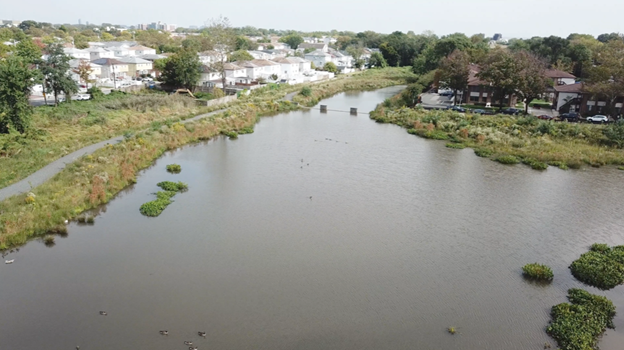Nostrum Laboratories Inc. (Nostrum), located in Missouri and New Jersey, and its founder and CEO, Nirmal Mulye, Ph.D. (Mulye), have agreed to pay a minimum of $3,825,000, and up to $50 million if certain financial contingencies are met, to resolve allegations that they violated the False Claims Act by knowingly underpaying Medicaid rebates due for Nostrum’s drug Nitrofurantoin Oral Suspension (Nitro OS). The settlement is based on Nostrum’s and Mulye’s financial condition.
Pursuant to the Medicaid Drug Rebate Program, drug manufacturers are required to pay quarterly rebates to state Medicaid programs in exchange for Medicaid’s coverage of the manufacturers’ drugs. The statute requires manufacturers to pay inflation-based rebates for drugs, which are designed to insulate the Medicaid program from drug price increases that outpace inflation. These rebates are calculated by comparing the drug’s current price to the drug’s price on the date that the “dosage form and strength” of the drug was first marketed or 1990, whichever is later.
As part of the settlement, Nostrum and Mulye admitted that:
Nostrum acquired Nitro OS from another manufacturer in December 2015 and continued to market the product pursuant to its preexisting FDA approval.
In January 2018, Nostrum temporarily ceased manufacturing Nitro OS because the amount of lead in the product did not comply with updated 2018 FDA guidance. After modifying quantities of two inactive ingredients to reduce overall lead levels, Nostrum resumed manufacturing and marketing Nitro OS in August 2018. Nostrum characterized the relaunched version of Nitro OS as a “reformulation,” but Nostrum did not add or subtract any ingredients and the active ingredients remain unchanged. Nitro OS also remained in the same dosage form and strength as it did prior to 2018. Nostrum continues to market this version of Nitro OS under the same FDA Approval as the pre-2018 version and maintains that it is legal to do so because no major changes have been made to the drug.
After relaunching Nitro OS in August 2018, Nostrum increased its price from $474.75 to $2,392.32 per bottle, which triggered significantly higher Medicaid Drug Rebate invoices from State Medicaid programs on account of the inflation-based rebate.
Beginning with the fourth quarter of 2018 through the first quarter of 2020 (when Nostrum withdrew from the Medicaid Drug Rebate Program), Nostrum and Mulye did not pay these entire invoiced amounts, despite learning that the larger rebate invoices were tied to the price increase and inflation based rebate and being notified by Centers for Medicare & Medicaid Services (CMS) that it should pay the higher calculated amounts. Instead, and despite prior communications to FDA that no “major changes” had been made to Nitro OS, Nostrum wrote CMS arguing that, because this version of Nitro OS is actually a “new” drug, Nostrum should not have to pay rebates based upon the prior version’s applicable price.
The United States contends that, as a result of these actions, it has certain civil claims against Nostrum and Mulye from Oct. 1, 2018, through March 31, 2020, for knowingly failing to pay the required rebate amounts owed for Nitro OS as required by the Rebate Statute and Rebate Agreement and as invoiced by State Medicaid programs.
“The department is committed to ensuring that pharmaceutical manufacturers meet their obligations to taxpayer funded health care programs, which support elderly and vulnerable populations,” said Principal Deputy Assistant Attorney General Brian M. Boynton, head of the Justice Department’s Civil Division. “As this settlement demonstrates, the department will hold accountable those who knowingly fail to satisfy these obligations.”
“The Medicaid program is a valuable safety net, providing health care to some of the most vulnerable Americans,” said Acting U.S. Attorney Joshua S. Levy for the District of Massachusetts. “By deliberately failing to pay appropriate rebates to Medicaid, Nostrum used that program to divert resources from those Americans in the hopes of generating profits. This office will not turn a blind eye to such flagrant abuse.”
“The Medicaid program provides medical treatment for some of our most vulnerable citizens, and when a drug company improperly circumvents rules designed to protect the Medicaid program from overpaying for prescription drugs, the American taxpayer pays the price,” said Special Agent in Charge Roberto Coviello of the Department of Health and Human Services, Office of Inspector General (HHS-OIG). “As illustrated by this settlement, pharmaceutical companies that disregard their obligation to play by the rules for financial gain will be held accountable for those actions.”
“Nostrum Laboratories reduced the amount that it paid to the Medicaid program by improperly calculating the rebates it owed, even after hiking the cost of one of their drugs by over 400%,” said Special Agent in Charge Jodi Cohen of the FBI Boston Field Office. “Today’s settlement is a win for taxpayers by ensuring that this pharmaceutical company cannot boost its bottom line at the expense of the Medicaid program and the vulnerable population it serves.”
The resolution obtained in this matter was the result of a coordinated effort between the Justice Department’s Civil Division, Commercial Litigation Branch, Fraud Section and the U.S. Attorney’s Office for the District of Massachusetts, with assistance from HHS-OIG and the FBI.
The investigation and resolution of this matter illustrates the government’s emphasis on combating health care fraud. One of the most powerful tools in this effort is the False Claims Act. Tips and complaints from all sources about potential fraud, waste, abuse, and mismanagement, can be reported to HHS at 800-HHS-TIPS (800-447-8477).
The matter was investigated by Fraud Section Attorneys Augie Ripa and Michael Hoffman, and Assistant U.S. Attorney Evan Panich for the District of Massachusetts.
The claims resolved by the settlement are allegations only, and there has been no determination of liability.







